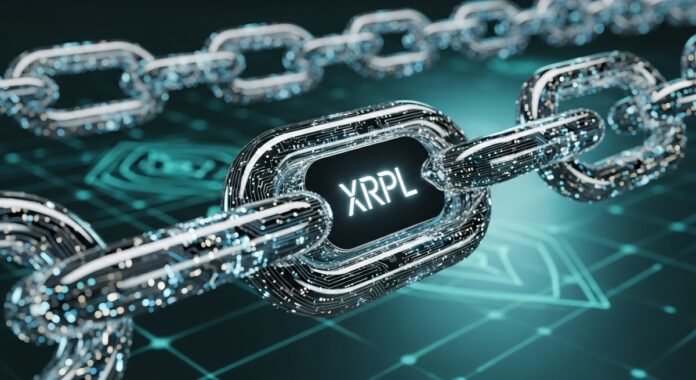
Ripple's ecosystem is undergoing a significant transformation to integrate its XRP Ledger (XRPL) network into a scenario where regulation is part of everyday life.
The company is currently working on incorporating essential features that will allow it to comply with regulatory standards without losing the decentralized essence and privacy that characterizes its technology.
A recent report from Messari analysts highlights how Ripple is preparing for institutional adoption. In this Valid identity document The incorporation of key tools for identity management, regulatory compliance, privacy, and asset management is highlighted; all these improvements aim to position XRP Ledger as a solid blockchain infrastructure, suitable for operating in regulated and demanding markets.
Ripple has confirmed these advances with the launch of a roadmap aimed at the institutional sector, which includes the development of various tools, such as verifiable credentials (KYC/AML), zero-knowledge proofs (ZKP), and a new standard for real-world asset tokenization (RWA).
Analysts emphasize that these innovations are designed to facilitate interoperability between traditional financial institutions and the crypto ecosystem. Furthermore, they offer a balance between operational efficiency and the protection of sensitive data.
Multi-Purpose Tokens and ZKP Privacy: XRPL Expands Its Institutional Offering
The evolution of the XRP Ledger (XRPL) marks a significant milestone in its consolidation as a key platform for institutional adoption in the world of digital finance. One of the most significant advances highlighted in the Messari report is the creation of the Multi-Purpose Tokens (MPT), an innovative standard that allows financial assets represented on the blockchain to carry embedded metadataThis enables essential attributes such as maturity dates, yields, and transfer restrictions, facilitating the issuance of complex instruments such as tokenized bonds or shares on the blockchain.
In addition, Ripple has announced that some of these MPTs will incorporate advanced privacy features based on zero knowledge tests (ZKP)This technology allows for verification of compliance with KYC/AML regulations without exposing personal data, which benefits auditors and counterparties who need to ensure legitimacy without compromising privacy.
According to Messari experts, XRPL has proven its robustness for over a decade, offering not only efficient and low-cost cross-border payments, but also key native functionalities such as tokens, NFTs, a decentralized exchange (DEX), and mechanisms for regulatory compliance and token management. While the base layer does not support arbitrary smart contracts to prioritize security and stability, extensions and sidechains are being implemented that add advanced programmability, aiming to expand its use cases.
Furthermore, XRPL is making progress in incorporating digital identity, regulatory compliance, and privacy features to facilitate its adoption in institutional sectors. These improvements, along with a native lending protocol in developmentThey are preparing the network for regulated credit markets and increased issuance of real-world assets (RWAs) and stablecoins, which are already reaching all-time highs on the platform.
XRPL advances in digital credentials and asset control for institutional compliance
One of the most notable tools in the XRPL improvements is CredentialsImplemented in September, this feature allows for the issuance and verification of digital credentials compliant with current regulations. This functionality is key to integrating institutional entities, ensuring compliance with essential requirements such as KYC and AML in the management of tokenized assets and trading platforms.
Furthermore, the arrival of Deep FreezeIn May, it provides a robust solution for blocking assets in emergency situations or under legal mandates, adding an important level of control and accountability in the management of digital resources.
These innovations, taken together, improve the traceability and protection of financial transactions in the XRPL, paving the way for new opportunities for regulated participation in digital markets.
According to the report, the extension Smart Escrows also This will represent a significant step forward, allowing for the creation of customized conditions for the release of escrow deposits, incorporating notary accounts and specific credentials. The launch is planned for the first quarter of 2026, followed by a complete network for smart contracts.
Finally, the DID-based standard that supports Credentials in XRPL introduces new objects and transaction types within the ledger, essential for maintaining regulatory compliance, promoting regulated access to risk-weighted assets, and strengthening trust across the entire ecosystem. These tools represent a decisive step toward institutional integration and the consolidation of the digital financial system within a secure and regulated framework.
In summary, with these innovations, Ripple strengthens its position to solidify XRPL as a blockchain platform ready to operate under a strict regulatory framework. The endorsement of experts like Messari confirms that this network is poised to lead a new phase of institutional adoption, integrating regulation, privacy, and operational efficiency on a scalable architecture.




